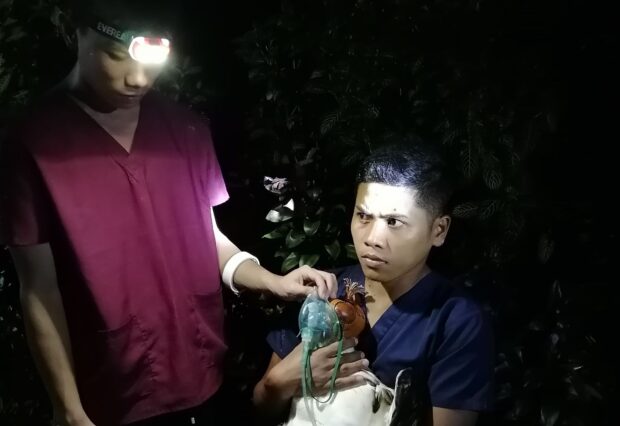
BREATHING PROBLEM Hiyas, one of 11 raptors examined on Thursday at the Philippine Eagle Center in Davao City, hyperventilated and needs oxygen to breathe. —JOSELLE R. BADILLA
DAVAO CITY—Eleven adult Philippine Eagle (Pithecophaga jefferyi) went through a thorough medical exam on Thursday night at the Philippine Eagle Center here by a team of volunteer veterinarians.
The annual ritual is conducted to ensure that every raptor, the country’s critically endangered national bird, is healthy.
The recent exam was conducted from 9 p.m. on Thursday and lasted up to 1 a.m. on Friday. The procedure is usually done at night when the birds are resting.
Magiting, Hiyas, Pagkakaisa, Mindanao, Zeus, Pagbabago, Lakpue, Enchanting Kagitingan, LDI and Pangarap, all exhibit-cum-ambassador eagles of the center, went through the annual procedure.
Microchips were also implanted in all of the raptors by Dr. Bayani Vandenbroeck, a veterinarian-consultant of the Philippine Eagle Foundation (PEF).
“The microchips will help facilitate identification and future health monitoring of our eagles,” according to PEF executive director Dennis Joseph Salvador.
The center has a total of 35 eagles, eight of which are set to be transferred to a new conservation and breeding facility in Barangay Eden, Toril district of this city.
A mustAccording to Dr. Jayson Ibañez, PEF director for operations, the annual physical exam for 35 captive Philippine eagles in the center is a must.
“With the threats of diseases that might potentially infect our only breeding stock for Philippine eagles, the annual physical exam of 35 captive eagles at the Philippine Eagle Center is a must. Eagle checkups are even more urgent with the ever-increasing human encroachment into natural habitats and woodlands around the Philippine Eagle Center due to farm expansion and urban sprawl,” Ibañez told the Inquirer.
READ: Courtship of Philippine eagle pair captured on film
He added: “Checkups are our best means to know whether we are doing a good job at keeping our eagles healthy. For eagles that have extra layers of fat and are overweight, we modify their diet and also provide more stimulating cage enrichment that makes them more active.”
The PEF, the prime mover in eagle conservation, breeding, rehabilitation and education in the country, was created in 1987 after it ceased receiving support from the government. It occupies an 8.4-hectare area at the foothills of Mt. Apo and depends heavily on donations for its activities.
At least 400 pairs of Philippine eagles remain in the wild, according to estimates from both the government and private conservation groups. INQ